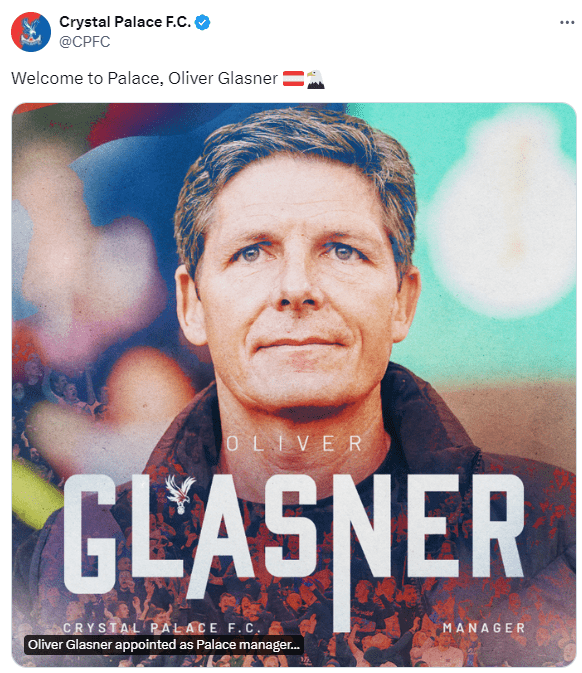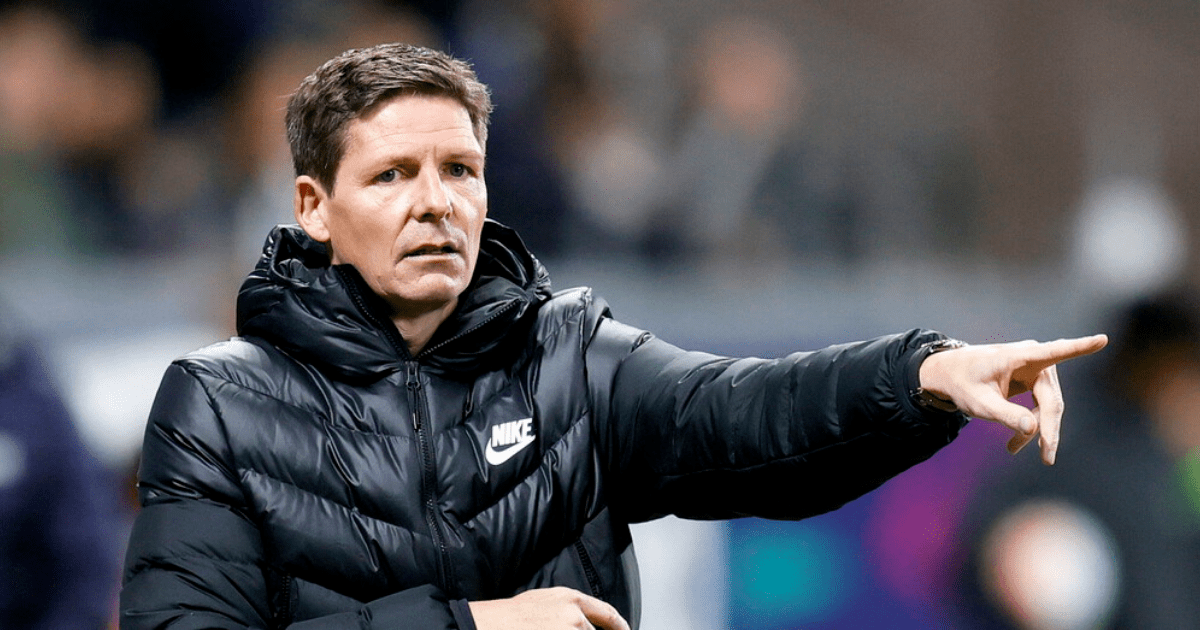Oliver Glasner Takes the Helm at Crystal Palace
Crystal Palace has officially announced that Oliver Glasner, 49, will be taking over as the new manager of the club. The Austrian coach steps in to replace Roy Hodgson, who recently departed Selhurst Park.
Transition of Power
Glasner signed a two-and-a-half-year deal with Crystal Palace after productive discussions while Hodgson was hospitalized. The former England boss made the decision to step down after 200 matches in charge across two spells.
Glasner's Excitement and Goals
Expressing his enthusiasm for the new role, Glasner stated, "I am very happy to join Crystal Palace as manager. I am looking forward to working with the talented squad, meeting the club’s supporters, and experiencing the Selhurst Park atmosphere I have heard so much about."
Farewell to Hodgson
Hodgson, who is now out of the hospital, shared his gratitude for the club and the players, acknowledging the special place Crystal Palace holds in his heart. His departure allows the club to move forward with their plans for the future.

Chairman's Welcome and Vision
Chairman Steve Parish expressed his delight in welcoming Glasner to the club and highlighted the new manager's successful track record. Parish believes Glasner's ambitious and attacking approach aligns perfectly with the club's goals for the current season and beyond.
Legacy of Hodgson
Parish also paid tribute to Hodgson, recognizing his significant contributions to Crystal Palace's history and Premier League status. Hodgson's dedication and commitment to the club have left a lasting impact, and he will always be welcomed back at Selhurst Park.
Frequently Asked Questions
What kind of goalkeeper gloves provides the best grip and protection?
Goalkeeper gloves featuring a palm made of latex offer the best performance under different conditions. The latex density and thickness can be varied to balance grip with durability. Moreover, gloves with finger protection systems – including spines or stiffening materials – can prevent hyperextension injuries to the fingers. Good gloves must also fit and be comfortable to allow the goalkeepers to perform their best.
What equipment is allowed in competitive football?
Yes, competitive football matches often enforce specific equipment regulations to ensure player safety and game integrity. Standard equipment includes jerseys that have sleeves, shorts covering shinguards and shoes. Adornments and equipment that pose a danger to the player or opponents are strictly prohibited. The rules can differ by league, and even age group.
How can I determine the type of football boots that are best for me?
You should choose the correct football boots depending on the type and surface of the pitch you will be playing. It is recommended to use metal studs for natural grass pitches. They provide traction as well as stability. For artificial turf, boots with numerous small rubber studs (AG – artificial grass) or a flat sole (TF – turf) are designed to offer better grip and reduce the risk of injury. Indoor courts need non-marking rubber shoes to avoid damaging the surface and to provide adequate movement.
Why is it that shinguards are mandatory for all football players?
Shin guards must be worn by all footballers. They protect the lower leg, which is vulnerable to injury from collisions and tackles. They protect the shins against serious injuries, such as fractures or severe bruises. The football governing bodies enforce the wearing of shinguards to ensure player safety.
Is it mandatory to wear football specific clothing, or am I allowed to wear any athletic wear?
While you can technically wear any athletic apparel to play football, the clothing designed for football enhances performance and comfort. Jerseys and shorts are usually made of lightweight, breathable materials that allow for optimal airflow, reducing overheating and sweat build-up. The fit is also tailored to enable a full range of motion, which can improve your overall agility and response times during play.
Statistics
- Data shows that thermo-bonded footballs, known for their consistent performance, are preferred by 65% of professional football clubs for matches.
- Compression garments are used by about 50% of professional football players during training sessions for muscle support and injury prevention.
- Around 25% of youth football players have reported using equipment that is either outdated or not suited to their position on the field.
- Globally, the demand for lightweight football cleats has risen by about 30% in the past decade, reflecting changes in player preferences and playing styles.
- Research has indicated that around 60% of football-related ankle injuries could be mitigated with the correct choice of footwear.
External Links
uksoccershop.com
puma.com
fifa.com
podiatrytoday.com
decathlon.co.uk
How To
How to Select Goalkeeper Gloves that Will Maximize Performance
Selecting the right goalkeeper gloves can make a significant difference. It is vital to consider grip when choosing gloves for different weather conditions. Palms made of latex offer the best grip. Fit should be snug but allow for movement without slipping. Gloves that have finger protection can reduce the risk of injury from hyperextension. Also, consider the type or padding. Though thicker padding provides more protection, the feeling of the ball may be compromised. Attention should also be paid to the wrist strap. This will help keep gloves in place while diving.

